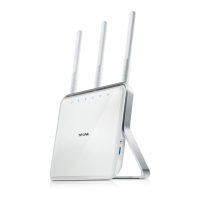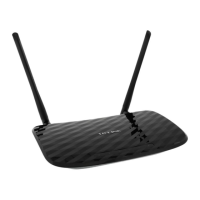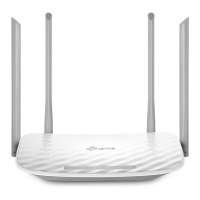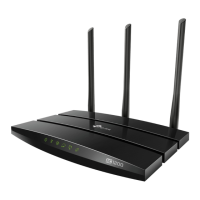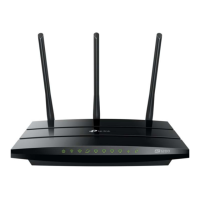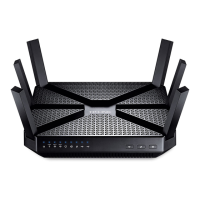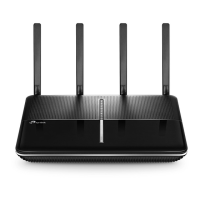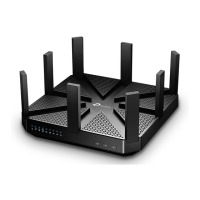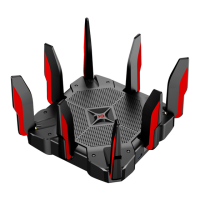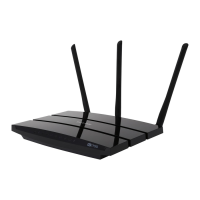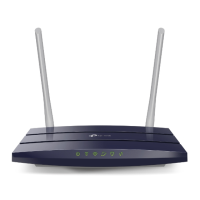Do you have a question about the TP-Link Archer C6 and is the answer not in the manual?
Step-by-step instructions for connecting the router to the modem and power sources.
Guides users through an automated process for initial internet setup and configuration.
Explains manual configuration for various internet connection types like PPPoE and Static IP.
Steps to create a TP-Link account for cloud services and remote management.
Using the mobile app for router management and monitoring from anywhere.
Instructions for creating a unified Wi-Fi network with TP-Link extenders.
Configuring internet access limits and content filtering for family members.
Tracking website visits and online time spent by connected devices.
Configuring firewall and DoS protection to prevent unauthorized access.
Blocking or allowing specific devices to access the network using MAC filtering.
Setting up an OpenVPN server for secure remote access to the home network.
Customizing SSID, password, security, and other wireless parameters.
Instructions for updating the router's firmware to the latest version.
Saving and restoring router settings for backup or recovery purposes.
Modifying the password used to access the router's web management interface.
| DSL WAN | No |
|---|---|
| Ethernet WAN | Yes |
| WAN connection type | RJ-45 |
| Storage temperature (T-T) | -40 - 70 °C |
| Operating temperature (T-T) | 0 - 40 °C |
| Storage relative humidity (H-H) | 5 - 90 % |
| Operating relative humidity (H-H) | 10 - 90 % |
| Package depth | 240 mm |
| Package width | 350 mm |
| Package height | 82 mm |
| Number of products included | 1 pc(s) |
| Cables included | LAN (RJ-45) |
| Product type | Tabletop router |
| Product color | Black |
| LED indicators | LAN, Power, Status, WLAN, WPS |
| Output current | 1 A |
| Output voltage | 12 V |
| Power source type | DC |
| Transmit power | CE EIRP: \u003C20dBm(2.4GHz); \u003C23dBm(5GHz) dBmW |
| Antennas quantity | 5 |
| Wi-Fi band | Dual-band (2.4 GHz / 5 GHz) |
| Wi-Fi standards | 802.11a, Wi-Fi 5 (802.11ac), 802.11b, 802.11g, Wi-Fi 4 (802.11n) |
| Top Wi-Fi standard | Wi-Fi 5 (802.11ac) |
| WLAN data transfer rate (first band) | 300 Mbit/s |
| WLAN data transfer rate (second band) | 867 Mbit/s |
| Firewall security | DoS, SPI Firewall, IP and MAC Address Binding |
| Security algorithms | 64-bit WEP, 128-bit WEP, WPA, WPA-PSK, WPA2, WPA2-PSK |
| Cabling technology | 10/100/1000Base-T(X) |
| Networking standards | IEEE 802.11a, IEEE 802.11ac, IEEE 802.11b, IEEE 802.11g, IEEE 802.11n |
| Receiver sensitivity | 5GHz: 11a 6Mbps:-93dBm;11a 54Mbps:-78dBm; 11ac HT20 mcs8:-69dBm;11ac HT40 mcs9:-65dBm; 11ac HT80 mcs9:-62dBm; 2.4GHz: 11g 54Mbps:-78dBm; 11n HT20 mcs7:-74dBm; 11n HT40 mcs7:-71dbm |
| Ethernet LAN data rates | 10, 100, 1000 Mbit/s |
| Ethernet LAN interface type | Gigabit Ethernet |
| Number of guest networks (2.4 GHz) | 1 |
| Routing protocols | IP |
| Supported network protocols | IPv4, IPv6 |
| Ethernet LAN (RJ-45) ports | 4 |
| Mac operating systems supported | macOS |
| Windows operating systems supported | Windows 10, Windows 7, Windows 8, Windows 8.1, Windows 98SE, Windows NT, Windows Vista, Windows XP |
| Depth | 144 mm |
|---|---|
| Width | 230 mm |
| Height | 35 mm |
